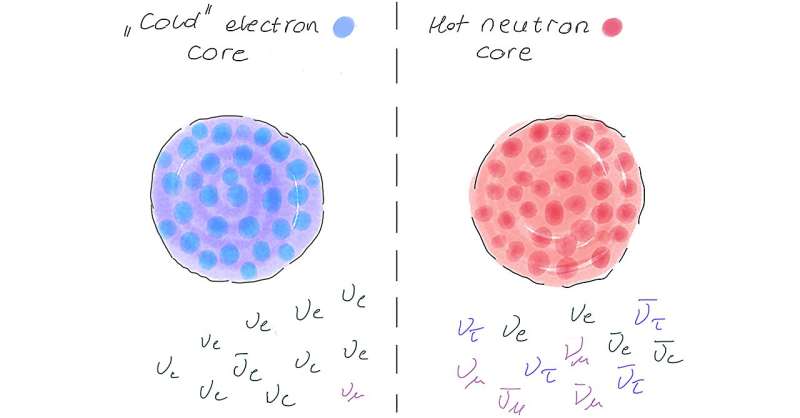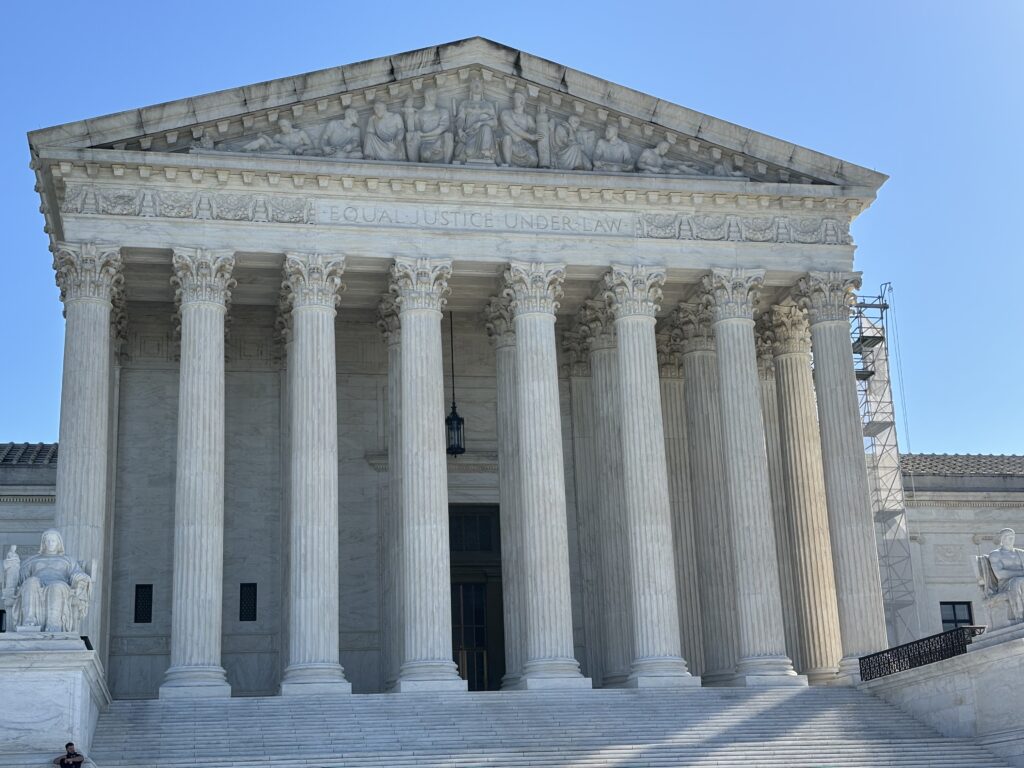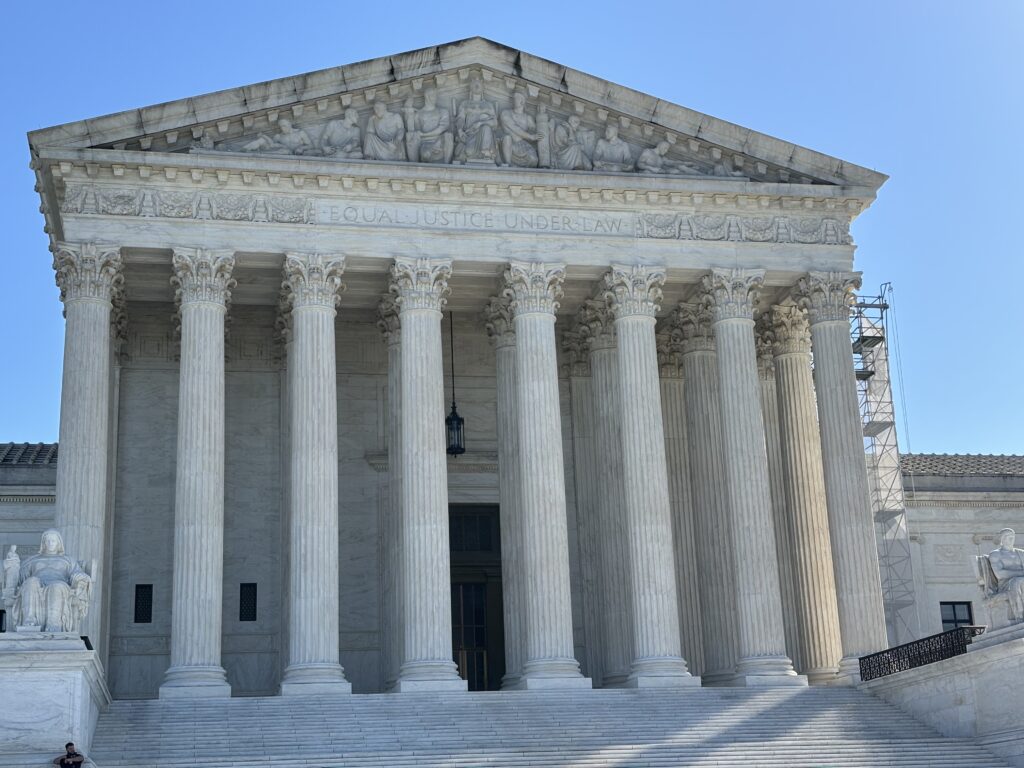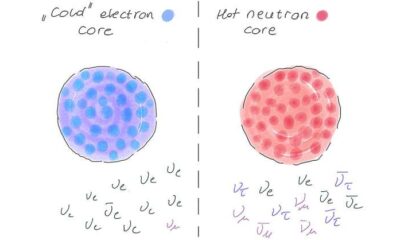Science
Neutrinos Uncovered: New Study Reveals Their Role in Star Collapse

Research from the University of California – San Diego has unveiled new insights into the behavior of neutrinos during the collapse of massive stars. The study suggests that these elusive particles may engage in previously unrecognized interactions, significantly influencing the outcomes of stellar explosions.
Neutrinos, often described as “cosmic tricksters,” are fundamental particles that come in three varieties: electron, muon, and tau. Despite their prevalence in the universe, much about their interactions remains enigmatic. Traditionally, it has been challenging to observe neutrinos interacting with one another, complicating efforts to understand whether they follow the standard model of particle physics or if they possess hidden interaction mechanisms.
Through theoretical calculations, the team from the Network for Neutrinos, Nuclear Astrophysics, and Symmetries (N3AS) has proposed that collapsing massive stars can act as a natural “neutrino collider.” As these stars undergo collapse, they lose thermal energy, prompting their electrons to accelerate close to the speed of light. This instability can lead to a dramatic transformation of the star.
New Insights into Stellar Collapse
The findings, published in Physical Review Letters, indicate that as stellar density increases during collapse, neutrinos become trapped and may collide with one another. If neutrinos interact exclusively through the standard model, the resulting particles will predominantly be electron-flavored, and the collapsed star is likely to leave behind a neutron star remnant.
In contrast, if these particles engage in secret interactions that alter their flavor, the scenario changes significantly. The study illustrates that such interactions could produce a diverse array of neutrino flavors, resulting in a “hot” neutron core that may ultimately form a black hole.
The research was led by a team including Anna M. Suliga, Julien Froustey, Lukáš Gráf, Kyle Kehrer, and George Fuller, alongside collaborators from various institutions. Their work opens new pathways for understanding the role of neutrinos in cosmic events.
Future Research Directions
The implications of these findings extend to upcoming experiments and observations. The Fermi National Accelerator Lab’s Deep Underground Neutrino Experiment (DUNE) is poised to explore these concepts further. Additionally, future studies of neutrinos and gravitational waves generated by collapsing stars could provide further evidence to support or refute these theories.
The research highlights the complex interplay of fundamental particles and astrophysical phenomena, illustrating how neutrinos, despite their elusive nature, can play a crucial role in shaping the fate of massive stars. By expanding our understanding of these interactions, scientists hope to unlock deeper insights into the workings of the universe.
For more information, refer to the original study by Anna M. Suliga et al., titled “Nonconservation of Lepton Numbers in the Neutrino Sector Could Change the Prospects for Core Collapse Supernova Explosions,” published in Physical Review Letters on July 14, 2025.
Science
Animals Respond to Plant Sounds, Revealing Hidden Ecosystems

New research from Tel Aviv University has unveiled that animals, specifically female moths, react to sounds produced by plants, suggesting an intricate and previously hidden ecosystem between flora and fauna. This groundbreaking study indicates that moths avoid laying their eggs on tomato plants emitting distress signals, which may indicate the plants are unhealthy.
In a series of carefully controlled experiments, the research team demonstrated that these sounds, which fall outside the human hearing range, can be perceived by various insects, bats, and some mammals. The findings, published in the journal eLife, align with earlier research that established plants emit sounds when they are under stress or in distress.
Professor Yossi Yovel, a leading researcher on the project, stated, “This is the first demonstration ever of an animal responding to sounds produced by a plant.” He noted that while this discovery is still speculative, it opens up numerous possibilities. Animals may make crucial decisions based on plant sounds, affecting behaviors such as whether to pollinate, seek shelter, or even consume them.
The study specifically focused on the behavior of female moths, which typically lay their eggs on tomato plants, providing a food source for their larvae upon hatching. The researchers aimed to determine whether the moths would heed a plant’s distress signals, ultimately finding that they chose not to lay eggs on stressed plants.
Exploring the Communication Between Species
The research team is now poised to investigate the various sounds different plants produce and whether other species respond to these auditory cues. Professor Lilach Hadany, another researcher involved in the study, highlighted the potential for plants to communicate distress signals to one another. She explained, “If a plant is stressed, the organism most concerned about it is other plants, and they can respond in many ways.”
While the study reveals the significance of sound in the plant-animal interaction, the researchers emphasize that plants are not sentient beings. The sounds they produce result from physical changes in their environment rather than conscious communication. Nevertheless, the implications of this research suggest that both plants and animals may have evolved to utilize these sounds for mutual benefits.
According to Professor Hadany, “Plants could evolve to make more sounds or louder ones if they were of benefit to it, and the hearing of animals may evolve accordingly so they can take in this huge amount of information.” She described the research area as “a vast, unexplored field—an entire world waiting to be discovered.”
This exploration of the relationship between plants and animals highlights a complex web of interactions that could reshape our understanding of ecosystems. As scientists continue to delve into these findings, the impact on agriculture, conservation, and ecological studies may be profound.
The potential for animals to respond to plant sounds opens the door to a myriad of questions about the intricate connections sustaining life on Earth. Future research will likely uncover more about how these interactions play out in natural settings and their implications for biodiversity and ecosystem health.
Science
Animals Respond to Plant Sounds, Revealing Hidden Ecosystem

Research from **Tel Aviv University** has unveiled that animals, specifically female moths, respond to sounds made by plants, indicating a previously unknown level of interaction between these organisms. The study highlights how these moths avoid laying their eggs on tomato plants that emit distress signals, potentially linked to the plants’ health.
This groundbreaking research, published in the journal **eLife** in March 2024, builds on previous findings by the same team, which demonstrated that plants produce sounds when they are under stress. These sounds, although inaudible to humans, can be detected by various species, including insects, bats, and some mammals.
Prof Yossi Yovel, a key researcher in this study, stated, “This is the first demonstration ever of an animal responding to sounds produced by a plant.” He emphasized that while this is still speculative, it suggests that animals might make crucial decisions based on the auditory signals from plants, such as choosing whether to pollinate or seek shelter.
Experiment Details and Findings
In a series of meticulously controlled experiments, the researchers ensured that the moths’ responses were strictly due to the sounds and not the visual characteristics of the plants. The findings revealed that when tomato plants emitted sounds indicative of distress, the moths refrained from laying their eggs, which they typically do on healthy plants.
The team is now poised to explore the sounds produced by various plant species and whether other animals also react to these auditory cues, potentially informing their behaviors regarding feeding, pollination, or habitat selection.
Prof Yovel further noted, “You can think that there could be many complicated interactions, and this is the first step.” This line of inquiry opens the door to understanding the complex relationships within ecosystems.
Implications for Plant Communication
Another intriguing aspect of the study involves the potential for plants to communicate with each other through sound. According to **Prof Lilach Hadany**, also from Tel Aviv University, this raises exciting questions about how plants might respond to stress signals from their counterparts, particularly in adverse conditions like drought.
“If a plant is stressed, the organism most concerned about it is other plants,” she explained in a statement. “They can respond in many ways.” While the researchers clarify that plants are not sentient beings, the sounds they produce are a result of physical changes in their environment.
The implications of this research suggest that if plants and animals can indeed communicate through sound, it could signify a co-evolutionary process where plants adapt to produce beneficial sounds while animals evolve to interpret these signals effectively. Prof Hadany remarked, “This is a vast, unexplored field—an entire world waiting to be discovered.”
This study marks a significant advancement in our understanding of ecological interactions. As scientists continue to investigate these phenomena, the intricate web of life that connects animals and plants may become clearer, revealing how they depend on one another in ways previously unrecognized.
Science
Supreme Court Permits Trump to Proceed with Education Department Cuts

The U.S. Supreme Court has granted President Donald Trump temporary permission to execute significant layoffs and a plan to reduce the size of the U.S. Department of Education. This decision, issued on Monday, represents a notable victory for Trump, who has aimed to reform the federal government’s role in education.
The Court’s ruling was delivered without a signed opinion and was supported by a 6-3 majority. Justices Sonia Sotomayor, Elena Kagan, and Ketanji Brown Jackson dissented. Justice Sotomayor criticized the majority’s ruling, stating, “The majority is either willfully blind to the implications of its ruling or naive. But either way the threat to our Constitution’s separation of powers is grave.”
Details of the Supreme Court’s Ruling
The Supreme Court’s order temporarily halts lower court rulings that mandated the Education Department to reinstate over 1,300 employees affected by layoffs as part of a reduction in force (RIF). Additionally, it blocks an order that prevented the department from implementing Trump’s executive directive to dismantle parts of the agency. The ruling also allows for the transfer of certain services to other federal agencies.
In response, Linda McMahon, the U.S. Secretary of Education, praised the ruling as an affirmation of presidential authority. “Today, the Supreme Court again confirmed the obvious: the President of the United States, as the head of the Executive Branch, has the ultimate authority to make decisions about staffing levels, administrative organization, and day-to-day operations of federal agencies,” McMahon stated. She emphasized that the ruling would enable the department to focus on improving the quality of education in the country.
Reactions from Opponents
The decision has drawn ire from a coalition of teachers, unions, and school districts that had previously sued over Trump’s plan to eliminate the department and implement mass layoffs. They expressed their deep disappointment with the Supreme Court’s decision, calling it “incredibly disappointing.” The coalition argues that this plan will cause immediate and lasting harm to students, educators, and communities nationwide.
“This unlawful plan will immediately and irreparably harm students, educators and communities across our nation. Children will be among those hurt the most by this decision,” they asserted, vowing to continue their fight for the protections and resources vital to public schools.
Several Democratic attorneys general, including those from Arizona, California, and Massachusetts, have also challenged the administration’s initiatives in court. In March, they filed lawsuits against some of the administration’s most significant education reforms. The lawsuits were consolidated by a federal judge in Massachusetts, who initially granted the plaintiffs a preliminary injunction in May. Following an appeal, the U.S. Court of Appeals for the First Circuit upheld the lower court’s order, prompting the Trump administration to seek intervention from the Supreme Court.
As the situation unfolds, the implications of the Supreme Court’s ruling are likely to resonate deeply across the educational landscape, affecting countless students and educators in the process.
Science
Supreme Court Allows Trump to Proceed with Education Department Cuts

The U.S. Supreme Court has granted President Donald Trump the authority to advance his plan to significantly downsize the U.S. Department of Education. In an unsigned order issued on March 15, 2023, the Court allowed the administration to proceed with mass layoffs and restructuring efforts, following a series of lower court rulings that had temporarily blocked these actions.
This decision represents a notable victory for the Trump administration, which has long sought to reshape the federal government’s role in education. The ruling was not unanimous; Justices Sonia Sotomayor, Elena Kagan, and Ketanji Brown Jackson dissented, highlighting a divide among the justices regarding the implications of the ruling on the separation of powers.
The Supreme Court’s order effectively suspends lower court mandates that required the reinstatement of over 1,300 employees affected by the administration’s reduction in force (RIF) initiative. It also removes barriers that prevented the implementation of Trump’s executive order to dismantle the department and restricts the transfer of certain services to other federal agencies.
In response to the ruling, Education Secretary Linda McMahon expressed her approval, stating, “Today, the Supreme Court again confirmed the obvious: the President of the United States, as the head of the Executive Branch, has the ultimate authority to make decisions about staffing levels, administrative organization, and day-to-day operations of federal agencies.” McMahon characterized the ruling as a significant win for students and families, asserting that it allows the department to focus resources where they are most needed.
Opposition to the ruling has been swift. A coalition of teachers, unions, and school districts that previously sued the Trump administration expressed profound disappointment. They argued that the Supreme Court’s decision will “immediately and irreparably harm students, educators, and communities across our nation.” The coalition emphasized that children would be particularly affected by the execution of the administration’s plan.
The legal challenges began earlier in March when a group of Democratic attorneys general, including those from states such as California, New York, and Illinois, filed lawsuits against some of the administration’s key education policies. Additional legal action was taken by the American Federation of Teachers and other unions, consolidating their claims in a Massachusetts federal court.
In May, a federal judge issued a preliminary injunction in favor of the states and labor groups, leading to an appeal by the Trump administration. In June, the U.S. Court of Appeals for the 1st Circuit upheld the district court’s order, prompting the Trump administration to seek intervention from the Supreme Court.
As the legal battle continues, the ramifications of the Court’s decision will unfold, impacting educational institutions and the communities they serve. The Trump administration appears resolute in its commitment to reform the Department of Education, a move that will likely generate further debate and legal scrutiny in the coming months.
-

 Sports18 hours ago
Sports18 hours agoSheffield United’s Young Talent Embraces Championship Opportunity
-

 Health18 hours ago
Health18 hours agoAI Tool EAGLE Streamlines Lung Cancer Mutation Detection
-

 Business16 hours ago
Business16 hours agoNew Study Links Economic Inequality to Lower Well-Being Globally
-

 Top Stories16 hours ago
Top Stories16 hours agoAustralian Man Arrested for Alleged Damage to Stone of Destiny
-

 Business17 hours ago
Business17 hours agoTrump’s “One Big Beautiful Bill” Faces Economic Scrutiny
-

 Top Stories15 hours ago
Top Stories15 hours agoBoeing 787 Returns to London After Short Flight to Bogotá
-

 Top Stories13 hours ago
Top Stories13 hours agoProtests Erupt in Niksic as Officials Celebrate Controversial Events
-

 Science16 hours ago
Science16 hours agoStudy Reveals Widespread Flooding in North Carolina Exceeds Expectations
-

 Sports17 hours ago
Sports17 hours agoEverton Pursues Johan Bakayoko as Transfer Deadline Approaches
-

 World16 hours ago
World16 hours agoLandlords Face Nightmare as Tenant Leaves Flat in Disarray
-

 Entertainment16 hours ago
Entertainment16 hours agoGrace Dent Poised to Replace Gregg Wallace on Celebrity MasterChef
-

 Lifestyle16 hours ago
Lifestyle16 hours agoBrits Identify Adulting Challenges: Cleaning, Cooking, and Time Woes











